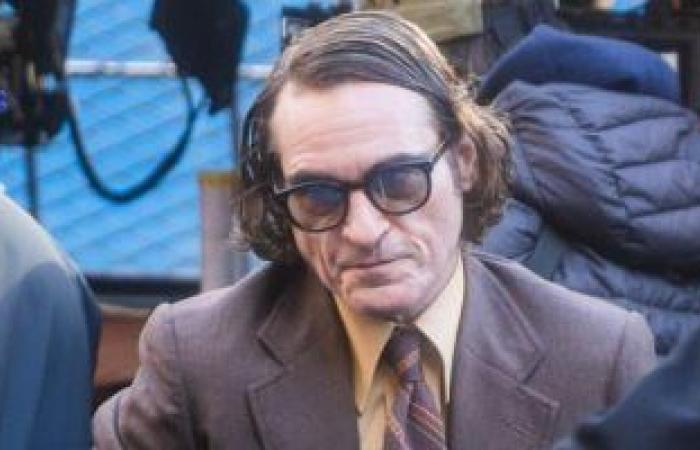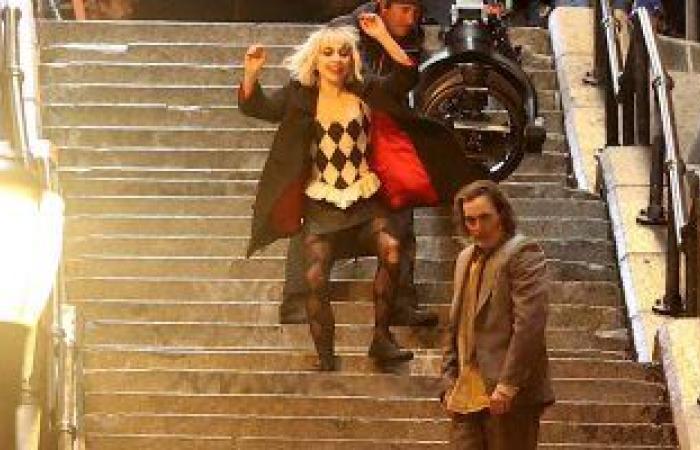
Is Todd Phillips trolling us? For the sequel to his divisive but wildly successful double Oscar-winning 2019 picture, Phillips tears up the formula. The gritty panache of Joker’s “making of a murderer” narrative and the subsequent extravagantly violent crime spree is replaced by two hours and 20 minutes of a musical romance/courtroom drama mashup. Oh, and there’s also a Looney Tunes-style animated prologue created by The Triplets of Belleville director Sylvain Chomet. The influences of the first film – few movies have borrowed so obviously and profligately from Martin Scorsese’s The King of Comedy – are largely discarded. Joker: Folie à Deux, which features Lady Gaga alongside returning star Joaquin Phoenix, draws instead from pictures such as Francis Ford Coppola’s One From the Heart and Scorsese’s New York, New York – both musicals and, it’s worth mentioning, both notorious flops.
It’s a bold, if potentially uncommercial decision: the comic book musical is an underpopulated genre, for good reason. Comic book musicals in which one of the lead actors can barely carry a tune (Phoenix’s Joker sings in much the same way he laughs, sinewy, strained and painfully, as if every note is being kicked out of him) are an even rarer beast. But while the song and dance element might be a stumbling block for some of the first film’s existing fanbase, it’s not the main issue here. For all the standard-mangling assaults on classic songs (Bewitched, Bothered and Bewildered gets a particularly tone-deaf mauling), the idea of a musical as the delusional fantasy of a broken mind works rather well at times. The problem is that, for all the audacious changes in approach, there’s very little that’s new here.
Like the first film, Folie à Deux is told almost entirely from the perspective of Joker/Arthur Fleck; it shares the same self-pitying sympathy-for-the-incel sense of societal injustice. And while the title seems to promise a dual focus and fresh blood in the form of Gaga’s Lee Quinzel, in practice, she is very much a secondary character who earns next to no screen time on her own and suffers from thin writing and cursory characterisation. It’s a testament to Gaga’s weapons-grade charisma and star quality that despite all this, Lee’s scenes are electrifying and she lands every last line like a punch.
The sequel takes place soon after the events of the first film. Arthur Fleck is incarcerated in the Arkham Asylum for the Criminally Insane. Enough time has passed for Joker to have evolved from a counter-cultural anti-hero to a pop-cultural phenomenon, but the scars that his actions have left on Gotham are still fresh. An exploitative TV movie has been made about his life and crimes; the cartoon that opens the film – titled Me and My Shadow – not only refreshes the memory of the televised events on the Murray Franklin Show, but introduces a key theme in the sequel. The “deux” of the title, it becomes clear, is as much about the warring dual personalities of Arthur and Joker as it is about the romance between Joker and Lee.
As his court case approaches, Arthur’s defence attorney Maryanne Stewart (Catherine Keener) is determined to paint her client as a hapless victim whose childhood traumas caused his psyche to split, with Arthur’s free will subsumed by that of his monstrous alter ego, Joker. Meanwhile, his fans, of which Lee is number one, have little interest in a sad sack nobody like Arthur, but worship Joker as the clown prince of chaos.
Arthur’s pain, a supporting character in the first film, now leaks from the screen in every frame. It’s present in the colour palette of the asylum’s interior, an unsavoury prison laundry combination of piss yellows and despairing greys. And it’s evident in Arthur’s tortured physicality. Phoenix, who once again slimmed down considerably for the role, plays the character like a figure from a Bruegel painting, his body contorted by the perpetual torment of his own personal hell. Then there’s the helpless agony of that retching, spasming laugh.
Arthur’s world is rocked on its axis when he meets fellow inmate Lee in a music therapy session. The frame floods with colour – specifically the Joker wardrobe shades of saffron yellow, blood red and teal blue. And Arthur rediscovers the music that was in him all along. Music that, like most things in Arthur, takes on a grotesque, cartoonish quality once it is filtered through the Joker’s lens.
The musical sequences, inspired by everything from black and white 1940s spectaculars to tacky Vegas-style variety shows, are the moments that lift the film – particularly those with Gaga front and centre. Not only is she a fascinatingly treacherous and fundamentally untrustworthy character, she can belt out That’s Entertainment with the best of them. It’s in the courtroom segments, in which Lee is relegated to the back of the public gallery, and the already indulgent screenplay further slackens, that the film’s running time really makes itself felt. And Arthur, who fires his attorney and defends himself, adds another anti-string to his bow: the comedian who wasn’t funny and the singer who can’t sing is also a showboating lawyer who hasn’t the first idea about winning his case.
In UK and Irish cinemas












